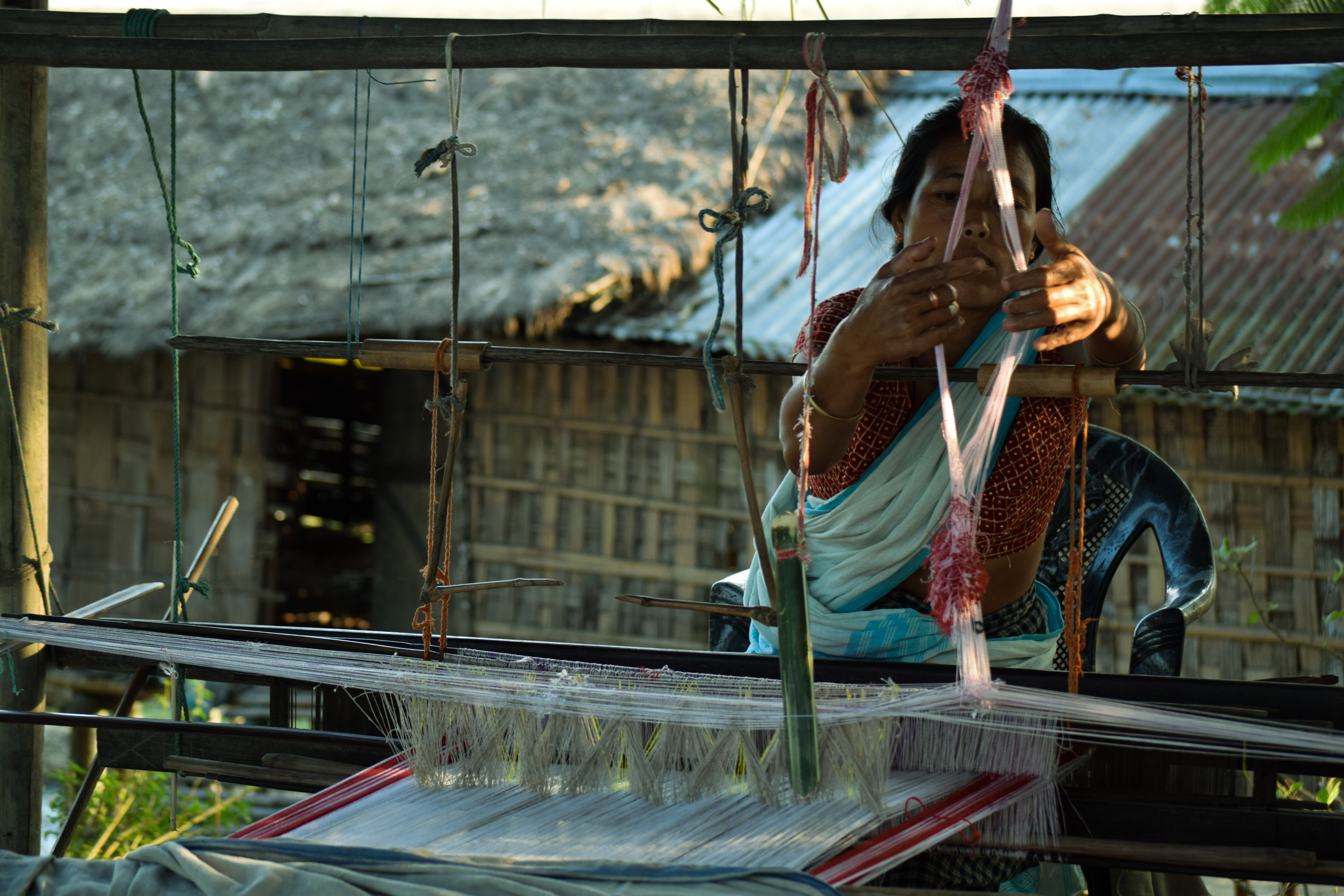Fondly tucked between the sister rivers Subansiri and Kherketia and nursed by the mighty Brahmaputra, lies a landscape of Majuli, simply inescapable from the eyes of intrepid travelers. It is an island of pristine sublimity, offering vistas of freedom wrapped in nature’s warm embrace, unlocking the hidden mysteries, exciting imaginations, swaying as the river swells, breathing in its vast openness and smiling at every bell that chimes in the satras. An expanse of land shaped by fortunes and fury of Brahmaputra, Majuli’s story is as sublime as the river it stands on. Several stories innocence, optimism and disenchantment, knitted as one, are played out on this land every day. A day is lived in the rituals and songs in satras, in the paddy fields, in the colourful tapestry of Assamese silk and breathes through the fisherman’s mesh. Life is quite simple here, yet elusive as the island is slowly disappearing, some inches every year, losing itself to the river that nurtures it, living its full circle of life. Already reduced to a third of its original size, it is predicted that Majuli will disappear within twenty years.

Taken from (http://indiaexchange.org/places/majuli-assams-famous-river-island/)
To get to this largest river island, a huge ferry is boarded from Jorhat in Upper Assam. A slow boat ride of two hours, is spent in breathing in the freshness and the rawness of the riverine landscape created by the mightiest of Indian rivers. And when you are in Majuli, ditch the vehicle or a guide to explore the island, hire a bicycle and cycle your way through the cultural ambiance of the island. Majuli is the seat of neo-Vaishnavite culture, a monotheistic offshoot of Hinduism. Since 15th century, followers of Saint Srimanta Sankardeva have been building monasteries or satras here. Twenty satras stand today, with almost twice of the number lost to the river. These ancient buildings pulsate with dance, drama and songs and have to a great extent defined the lifestyle in Majuli. Houses in Majuli have a central space in their house, called Namghar (taken from the satras), where people gather, sing, dance and pray. That’s how most of the Majuli lives, draped in spirituality.

Auniati Satra in Majuli
A half an hour of strolling on the village roads, took me to the biggest and the most revered Auniati satra, established in 1663 by the king of Assam, which accommodates more than 400 bachelor monks. It was the morning prayer session, the place was quiet. I learned that Auniati Satra has accommodation options for travelers, a good option if one wants to learn more of the lifestyle in a satra and make it a guided tour of vaishnaivite culture.
Cycling my way along the rolling meadows interspersed with paddy fields and small water bodies, waving to the Mishing tribe, absorbing the absoluteness of rural life in the island, I reached the Samaguri satra, to meet the monks who dance. Samaguri satra is known for mask making and is an important highlight of the three day annual festival which happens in last week of November. The walls of the workshop in the satra were lined with colourful, macabre masks of animals and humans. Monks of Samaguri satra present a dance drama, around the life of incarnations of Lord Vishnu in the festival.
 The efforts of the satra in reviving the art and culture of dance dramas (chaith katha) has been appreciated by Indian Government and the high priest of the satra, who was instrumental in reviving this art, has been awarded with the highest civilian award of the country.
The efforts of the satra in reviving the art and culture of dance dramas (chaith katha) has been appreciated by Indian Government and the high priest of the satra, who was instrumental in reviving this art, has been awarded with the highest civilian award of the country.
More than the satras, Majuli lives in its people and their lives. Be ready to immerse in images of rural life, wide open grasslands where a shepherd is tending his cows or goats, fields where farmers are busy in harvesting, kids playing marbles or cattle grazing on the meadows; these are like stories of yesteryears, undisturbed by changing times. Little halts at places to breathe in these moments is a must. The in-scape gives you a feeling that culture, art and nature have conspired to restore our faith in the beauty of simple things. At times, get off the cycle to meet friendly locals, swap stories with them, they can take you to the more beautiful parts of the island, places off the road.

Visit the Mishing tribe, who migrated from Arunachal and are probably among the most colourful tribes of Assam, and who still hold strong beliefs in animism. Mishing tribe is also known for their preparation of Gadu which is a famous type of blanket and requires a lot of skill and knowledge to be made and for weaving the most elegant Assamese tapestries. And above all, they seem to be the most welcoming people one can meet.


A Mishing lady making Assamese tapestry
Majuli goes to sleep early and it is not rare to wake up in Majuli by a horn blast, followed by drums and then cymbals. That’s how Majuli wakes, soft prayer chanting mixed with bird songs. It wakes up lazily, praying, probably making a plea to Lord Vishnu to save the island before it is too late and then sheds the slumber with a lal-chai (red tea).
To reach: Majuli is in Jorhat district. One can take a ferry from the Nemati Ghat in Jorhat to Majuli (INR 20 per person). Jorhat is about seven hours by road or rail from Guwahati, Assam’s biggest city.
Best time to go: The best time to visit Majuli is between October (when the island is a post-monsoon burst of colour) and March (before the heat and humidity of summer). Plan your trip around the Ali-Ai-Ligang, a five-day spring festival of Mishing tribe celebrated to pay homage to nature, or the Porag festival to honour the bounties of Mother Earth.
To stay: Majuli has many basic accommodation facilities in the Karimbari area. La Maison de Ananda in Garamur (call +91 9957186356 or email at monjitrisong@yahoo.in) is probably the best option in Majuli. There are Govt. lodges too run by Majuli Tourism. Majuli Tourism, run by Jyoti Narayan Sarma, conducts birdwatching tours and rents bicycles.
To eat: Do try Assamese or Mishing cuisine at Danny’s Kitchen in La Maison de Ananda. A Mishing Thali includes rice, steamed fish, bamboo shoot chicken, dry fish powder and aloo pitika (Assamese-style mashed potatoes), among other seasonal dishes.
Not to miss: Boat ride in Luit Ghat for bird-watching or cycling through the villages towards smaller streams to watch the sunset.








